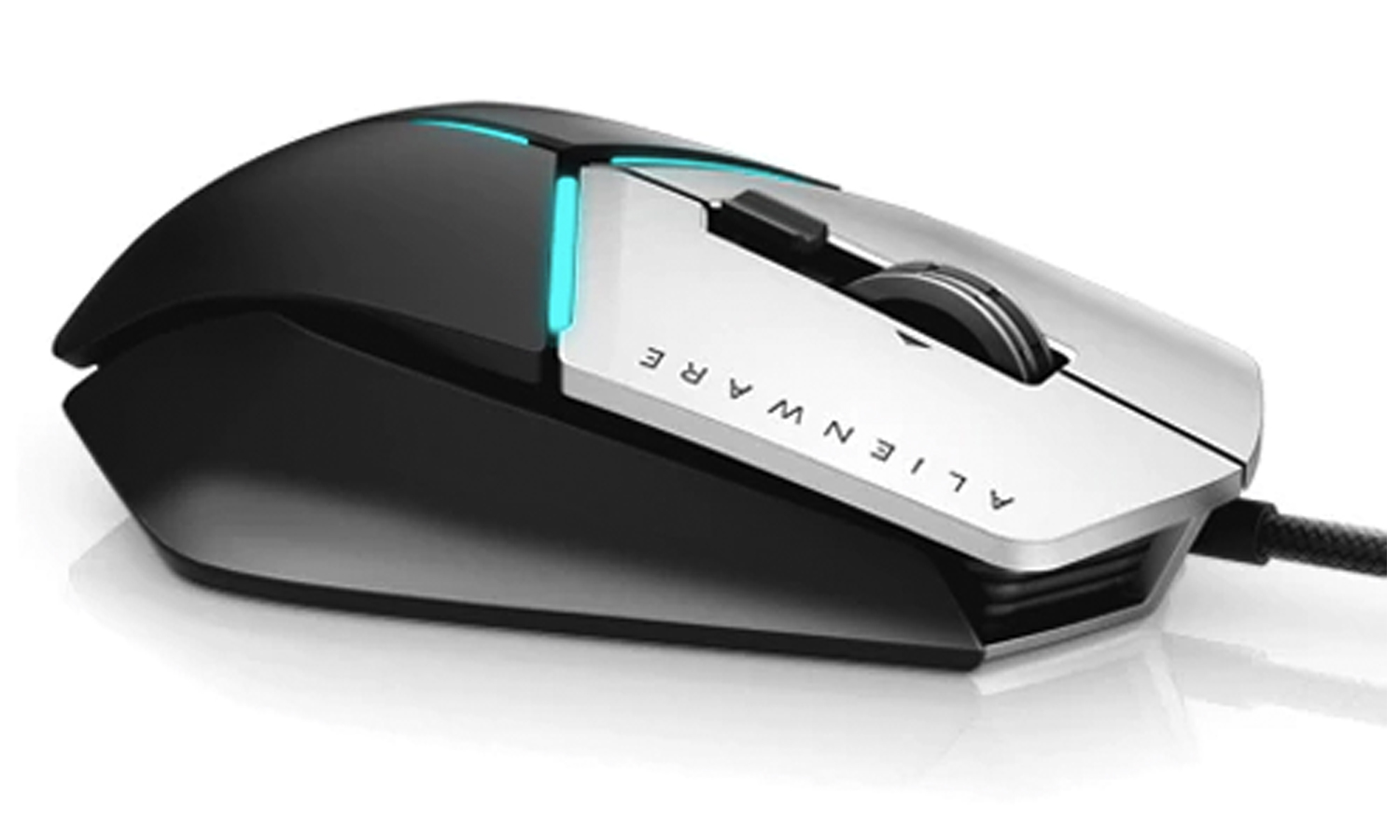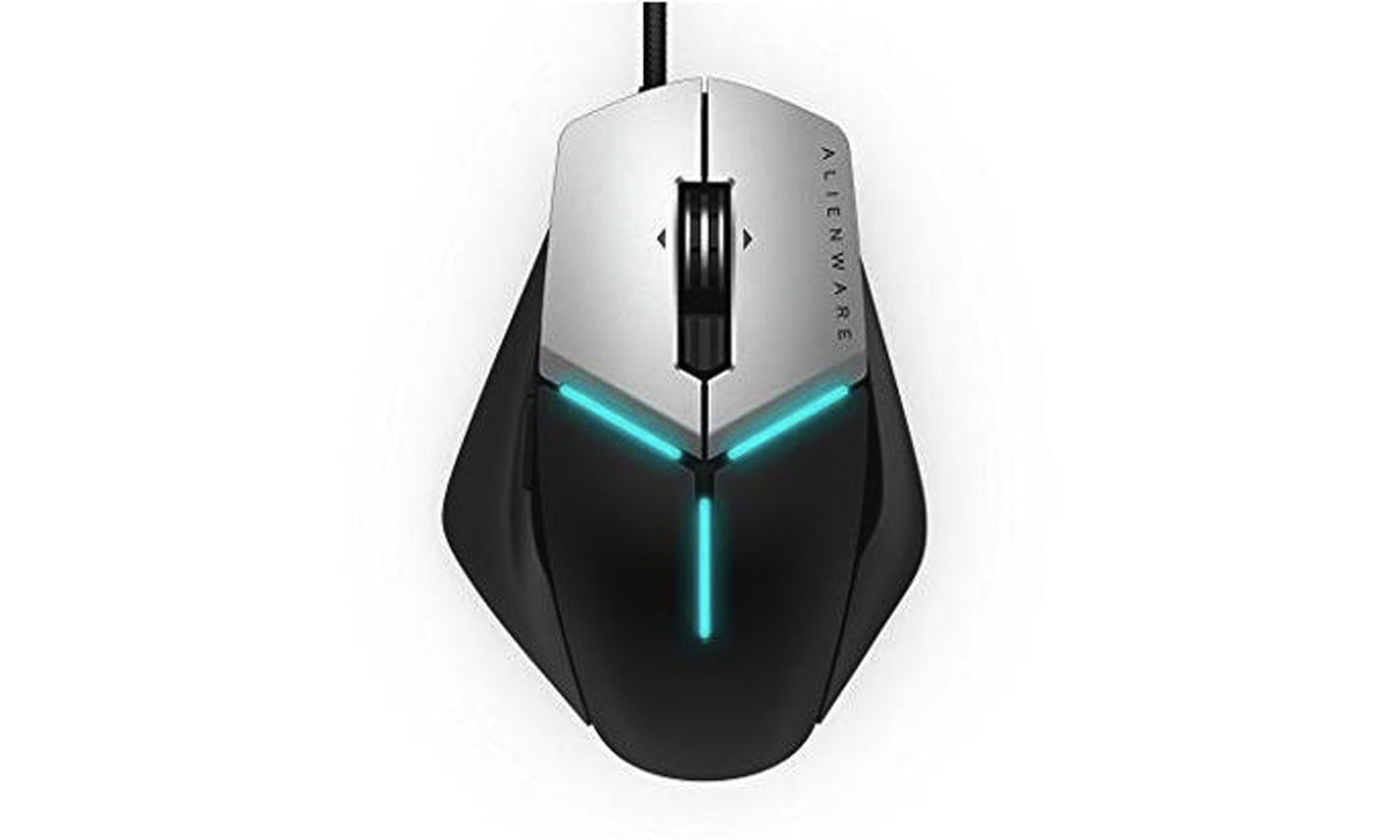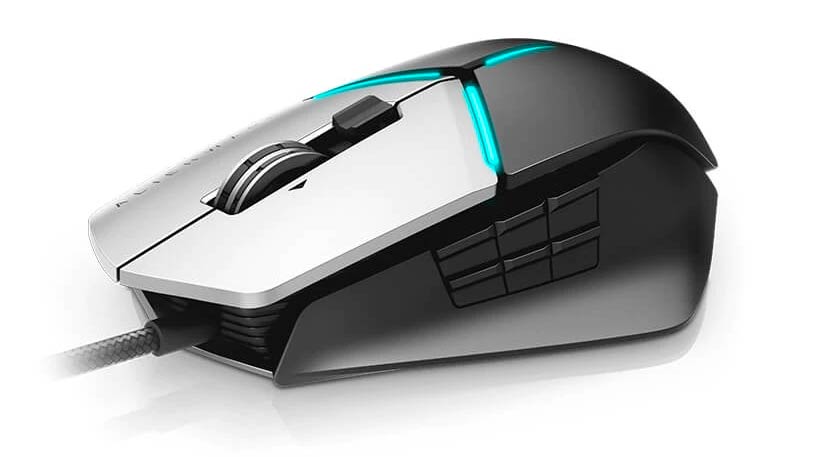Tom's Guide Verdict
The Alienware Elite Gaming Mouse AW958 is inoffensive, but it costs a lot of money and has a few uncomfortable design flaws.
Pros
- +
Attractive color scheme
- +
Competent performance
- +
Swappable parts
Cons
- -
Too expensive
- -
Tedious software
- -
Uncomfortable to hold
Why you can trust Tom's Guide
After years as a gaming PC manufacturer, Alienware has broken into the crowded peripherals scene. The Alienware Elite Gaming Mouse AW958 ($90) is the company's first crack at a high-end, customizable gaming mouse, and it's … OK.
The AW958 is an inoffensive mouse, in spite of a few truly bizarre design choices, but it's hard to believe it costs so much money, given its relative dearth of innovative features. The AW958 isn't worth tossing out if it comes packed in with a new Alienware system, but if you're simply in the market for a new mouse, you can find options that are more comfortable, just as effective and less expensive.
Design
The AW958 is a wide, squat mouse, although depending on your preferences, you can make it even wider and squatter. By default, it's 5.1 x 3.8 x 1.6 inches, but you can swap out components on either side of the mouse. Both thumb rests are the same size, although one has two buttons, whereas the other has six. (If you think six tiny thumb buttons scrunched into the space usually occupied by two sounds unwieldy, you're correct.)

You can also swap between a smooth side for the outermost fingers, or an extended surface to rest them on. In my experience, neither choice was very comfortable. The thumb rest extends so far out that using the smooth, opposite side makes the mouse feel unbalanced. Using the extended rest, on the other hand, makes it feel too large. The peripheral's center of gravity was never quite where I expected it to be.
It's responsive and accurate, and in spite of the pain of having to assign macros to each button, having between two and six extra buttons was helpful.
The device is attractive enough, in a nondescript kind of way. With silver buttons and a dark-gray chassis, the AW958 looks refined and decidedly intended for a purpose more exciting than everyday office work. You can have up to thirteen buttons: a left button, a right button, a scroll wheel that clicks three ways, a dots-per-inch (DPI) sensitivity adjuster that clicks two ways, and either two or six thumb buttons.

Tunability is the name of the AW958's game. You can add weights in the back, and even adjust the height of the palm rest. Combined with the swappable side parts, the mouse is actually quite ambitious. The only problem is that even if you tweak every last factor to your liking, it's still just not that pleasant to hold. The Logitech G900 and the Roccat Nyth both demonstrated that customizability and comfort are not mutually exclusive.
Features
The AW958 runs on the Alienware Control Center software, which still has a long way to go before it can run with Razer, SteelSeries and the like. You can do all the standard stuff — adjust the DPI levels, change the polling rate, alter the RGB lighting on three thin strips in the mouse's chassis — but reprogramming the buttons is much more difficult than it needs to be.
Get instant access to breaking news, the hottest reviews, great deals and helpful tips.
The Alienware Control Center allows you to record macros. That's good. However, it also requires you to record macros. That's not good. Rather than simply assigning a keystroke to the thumb buttons, you have to program a macro, then drag and drop it. Even if the macro is just hitting the “"1" key, you have to record it, then drag and drop. To be fair, this is not a gargantuan task. However, no other major mouse manufacturer makes users jump through this tedious hoop in order to set up thumb-button functions.

Beyond that, the AW958's swappable components and customizable feel, discussed above, are important features that set it apart from many of its competitors. In my opinion, they don't do much to elevate the product overall, but they're helpful inclusions, given how drastically gamers' hand sizes can vary.
Performance
It's hard to find a high-end gaming peripheral that doesn't perform well under everyday conditions, and the AW958 is no exception. I commanded Terran armies in StarCraft: Remastered, plowed through foes as Reaper in Overwatch, raised the dead as the Necromancer in Diablo III: Reaper of Souls and downed HYDRA agents in Marvel Heroes Omega without issue. The mouse simply works as advertised. It's responsive and accurate, and in spite of the pain of having to assign macros to each button, having between two and six extra buttons was helpful.
MORE: Our Favorite Gaming Mice for Every Genre
My only complaint is that if you opt for the six-button layout rather than the two, they're about as tightly bound — and as small — as corn kernels on a cob. You could eventually acclimate yourself to all of these buttons, but you'd be better off with a mouse like the Nyth or theRazer Naga Hex.
Bottom Line
Alienware's first premium mouse could have been much worse, but it's a couple of years behind the times. The swappable parts don't help address its overall design issues, the software feels half-baked and the price is simply baffling. For $10 less, you can get much better mice, such as theRazer Lancehead or theLogitech G502 Proteus Spectrum.
Like the Acer Predator Gaming Mouse, if the AW958 came prepackaged with your new machine, you may as well keep it. It's good enough for everyday play (although I question its utility for esports, given its unconventional design), and it's easy on the eyes. Otherwise, save your money and get something exceptional rather than passable.
Credit: Dell

Marshall Honorof was a senior editor for Tom's Guide, overseeing the site's coverage of gaming hardware and software. He comes from a science writing background, having studied paleomammalogy, biological anthropology, and the history of science and technology. After hours, you can find him practicing taekwondo or doing deep dives on classic sci-fi.

